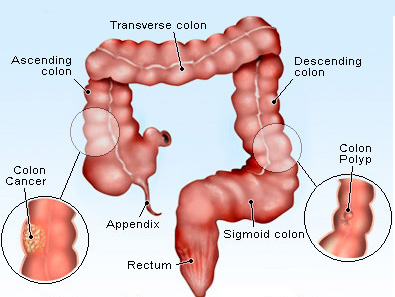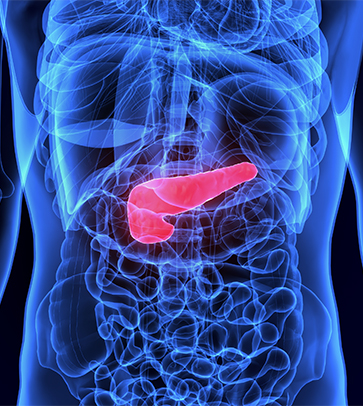How is it Treated?
Surgery is the main treatment. The doctor will remove any tumors that he or she can see. This usually means taking out one or both ovaries. It may also mean taking out the fallopian tubes and uterus. After surgery, most women have several months of chemotherapy, which means taking drugs that kill cancer cells.
This cancer often comes back after treatment. So you will need regular checkups for the rest of your life. If your cancer does come back, treatment may help you feel better and live longer.
Treatment of Overian Cancer
The treatment of ovarian cancer is based on the stage of the disease, which is a reflection of the extent of spread of the cancer to other parts of the body. Staging is performed by the surgeon when the ovarian cancer is removed. During the surgical procedure the surgeon will obtain small pieces of tissue (biopsies) from various sites in the abdominal cavity. During this procedure, depending on the stage (extent) of the disease, the surgeon will either remove just the ovary and fallopian tube or will remove both the ovaries, fallopian tubes and uterus. In addition, the surgeon will attempt to remove all visible cancer.
Overian Cancer is staged as follows:
Stage I cancer is confined to one or both ovaries. The cancer is Stage II if either one or both of the ovaries is involved and has spread to the uterus and/or the fallopian tubes or other sites in the pelvis. The cancer is Stage III cancer if one or both of the ovaries is involved and has spread to lymph nodes or other sites outside of the pelvis but is still within the abdominal cavity, such as the surface of the intestine or liver. The cancer is Stage IV cancer if one or both ovaries is involved and has spread outside the abdomen or has spread to the inside of the liver.
Treatment Options:
There are basically three forms of treatment of ovarian cancer. The primary one is surgery at which time the cancer is removed from the ovary and from all the other sites. Chemotherapy is the second important modality. This form of treatment uses drugs to kill the cancer cells. The other modality is radiation treatment, which is used in rare instances. It utilizes high energy x-rays to kill cancer cells. Surgical treatment is the single most important modality determining the outcome of ovarian cancer, besides its inherent biological behavior. It is best performed by a specialist oncosurgeon who has been specially trained in the diagnosis and management of gynecologic malignancy.
The treatment of ovarian cancer depends on the stage of the disease, the histologic cell type, and the patient’s age and overall condition. The histologic cell type and the extent of disease based on the biopsies performed by the gynecologic oncologist during surgery (staging), are determined by the pathologist who analyzes tissues with a microscope.
Recurrent Overian Epithelial Cancer:
Detection of Recurrent Disease : Small tumors generally respond better to treatment, therefore early detection of recurrence may be useful. However it is important to consider that the benefits of early introduction of salvage chemotherapy are limited and may intrude upon the patient’s symptom and treatment-free survival. Use of frequent clinical follow-up can detect treatment failure earlier. Follow-up includes bimanual pelvic examination, serial measurement of CA125 or another tumor marker, reassessment or second-look laparotomy and occasionally one or more imaging studies. However, recurrent cancer has a large spectrum of behavior making it relatively difficult to diagnose a relapse and determine the aggressiveness of the tumor.
Second-Look Surgery
The use of second-look surgery can help diagnose and manage ovarian cancer. The typical indication for which a Second-look is performed at our center is when an incomplete Cytoreduction has been performed at the first instance (usually by an inexperienced surgeon). Another rare instance is when an incomplete Cytoreduction was performed due to the poor general condition of the patient at the time of the first surgery, which has significantly improved after the adjuvant intra-venous chemotherapy. There is a recently published multi-centric studyref that strongly supports the role of HIPEC in this situation with more than doubling of the survival compared to historical standards. We promote the use of HIPEC in this situation and have had encouraging results for our patients.
Treatment of Recurrent Cancer:
Patients who develop recurrent cancer despite surgery and primary chemotherapy, and will be given salvage chemotherapy, may be placed into one of three groups (A-C):
Group A: are patients resistant to primary therapy and have shown tumor growth during treatment. This persisting tumor is considered to be refractory i.e. have absolute platinum-resistance. Secondary non-cross resistant chemotherapies or biological therapies should be considered.
Group B: are patients who respond well to initial chemotherapy, but develop recurrent cancer within months after the end of primary care. This group with relatively platinum resistant tumor has an intermediate prognosis.
Group C: are patients who showed a good response to primary chemotherapy, and did not develop recurrent cancer for more than 6 months after the end of primary treatment. This group with platinum-sensitive tumor shows the best responses to re-treatment with a platinum-containing regimen.
The probability of response to salvage chemotherapy is also markedly dependent upon the number of preceding chemotherapy regimens, such that third and fourth line chemotherapies are of limited benefit. However, unique patients responding to multiple retreatments with even the same regimen of chemotherapy are sometimes observed. Tumor burden, as assessed by the size of the largest lesion and the number of disease sites and histology (serous having the best outcome) are also independent predictors of response to salvage chemotherapy.
CRS and HIPEC in Recurrent Ovarian Cancers:
Selected patients with recurrent ovarian cancers can have a remarkable response with a well-performed CRS, especially if combined with HIPEC. Recent studiesref have shown that the survival can almost equal that of patients with primary stage III disease, provided a complete CRS (removal of all visible disease) can be achieved and combined with HIPEC. Usually such a surgery needs to be undertaken after some cycles of chemotherapy to ensure that all disease is resected. It is of paramount importance that a HIPEC expert undertakes this surgery to deliver optimal results. We have been regularly performing this surgery for recurrent ovarian cancers with encouraging outcomes.
Drug Resistance:
The likelihood a patient will respond to salvage chemotherapy correlates with, for the most part, the cancer’s degree of platinum drug resistance
The Gynecological Oncology Group (GOG) defines platinum resistance as meeting any of the criteria listed below:
Disease progression while on a first-line platinum-based regimen
Tumor progression within 6 months of completion of platinum-based therapy
Persistent clinically measurable disease with best response as stable disease at the completion of planned first-line therapy
Persistent clinically measurable disease with best response as stable disease with rising CA 125 while receiving first-line non-protocol therapy. Rising CA 125 levels must be documented with two examinations where the last result being greater than or equal to 100.
The most commonly used indicator of resistance is the period of time between the end of primary chemotherapy and relapse: the longer this length of time, the better the chances of responding to salvage chemotherapy.
Cancer that relapses after primary treatment using a single platin analog will have less resistance to treatment than cancer that relapses after primary treatment using multi-agent treatment
Generally, about 25%, 33%, and 60% respond to salvage treatment when their time between last chemotherapy and relapse is 6-12 months, 12-24 months, and greater than 24 months respectively.
An integrated team approach between the surgeon and the medical oncologist is necessary to deliver good results in these complex situations. In rare instances, CRS and HIPEC can be performed even in drug-resistant recurrent ovarian cancers with encouraging results. However, these patients are selected after a thorough evaluation and counseling as not all patients will benefit from this treatment.



















